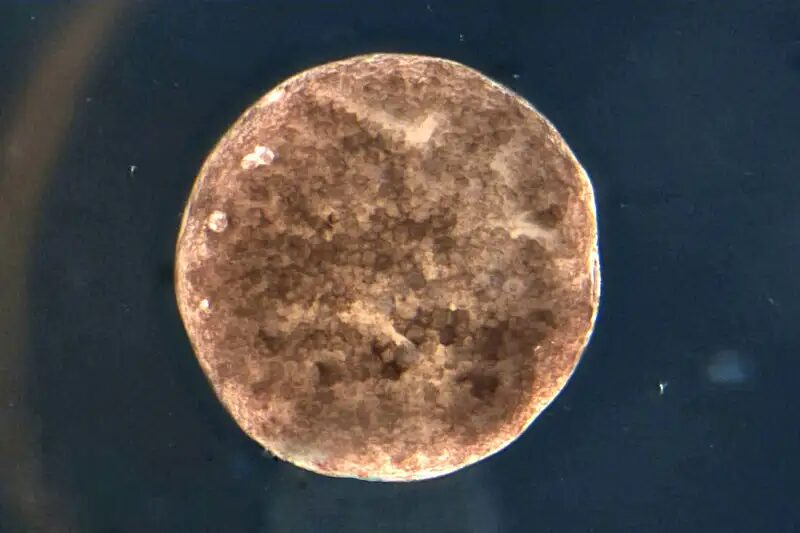
© Douglas BlackistonA xenobot, made from from frog skin cells.
A microscopic, living robot that can heal and power itself has been created out of frog skin cells.
Xenobots, named after the frog species
Xenopus laevis that the cells come from, were first described last year. Now the team behind the robots has improved their design and demonstrated new capabilities.
To create the spherical xenobots, Michael Levin at Tufts University in Massachusetts and his colleagues extracted tissue from 24-hour-old frog embryos which formed into spheroid structures after minimal physical manipulation.
Where the previous version relied on the contraction of heart muscle cells to move them forward by pushing off surfaces, these new xenobots swim around faster, being self-propelled by hair-like structures on their surface. They also live between three and seven days longer than their predecessors, which only lasted about seven days, and have the ability to sense their environment to some extent, turning red when exposed to blue light."The fundamental finding here is that when you liberate skin cells from their normal context, and you give them a chance to reimagine their multicellularity, they can build other things than what they normally build," says Levin. "To me, one of the most exciting things here is plasticity. This idea that even normal cells, not genetically modified, with a normal frog genome, are in fact capable of building something completely different."The xenobots, which are between a quarter and half a millimetre in size, operate in
robot swarms, meaning that a group of individual xenobots can work together to
complete a task.
Because they are created from cells, the xenobots eventually break apart and are totally biodegradable, says team member Douglas Blackiston, also at Tufts University. He therefore hopes that they can be used for
biomedical and environmental applications.
"Roboticists have been looking at swarm intelligence for a long time, biologists have been studying swarm intelligence in organisms. This is something in between, which I think is kind of interesting," says team member Josh Bongard at the University of Vermont. "It sort of suggests, to me at least as a roboticist, is this a better path to making swarms of useful machines than it is to make swarms out of traditional robotic parts?"
Previous attempts at creating living robots, such as a wirelessly controlled cockroach, have involved manipulating live animals, raising ethical concerns. Xenobots differ from these because they are made entirely of living cells."The approach here is maybe ethically the least problematic because everything is in vitro, they just start with cells, they have no neurons, so it's not an animal," says Auke Ijspeert at the Swiss Federal Institute of Technology at Lausanne, who wasn't involved in the research. "It's really cells that they manipulate, so I find it maybe the cleanest way."But are xenobots more like living organisms or traditional robots? "I don't feel any closer to an answer. Whether these are robots, whether these are frogs, whether these are something else entirely," says Bongard.
Journal reference: Science Robotics, DOI: 10.1126/scirobotics.abf1571
Comment: See also: